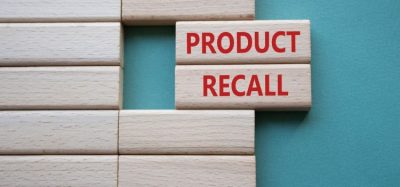Serialisation: Thinking global, acting local
Posted: 4 May 2018 | Graham Clark - TraceLink, Liam O'Riordan - Enterprise System Partners | No comments yet
Developing serialisation programmes is a key concern for pharmaceutical companies. Much of the decision-making is being driven by fast-approaching deadlines for compliance – both in the EU and US.


The rollout of serialisation programmes is an all-consuming process for today’s pharmaceutical companies. Fast-approaching deadlines for compliance in the EU and US are driving much of the decision-making, however it is vital that businesses and service providers operating in the serialisation sphere remember that serialisation mandates are in place in more than 50 countries. No two are alike and this creates a level of complexity and potential cost that could be difficult to manage for many businesses.
When these businesses turn to third-party providers, they need to be assured that suppliers understand these regulatory nuances and can implement serialisation programmes accordingly. Suppliers must offer flexibility and maintain a global perspective to ensure that they, and their customers by proxy, are capable of meeting new and evolving regulatory challenges.
This article discusses the need for a global perspective combined with local action, and how strategic partnerships can help the global pharma industry meet these challenges.
The global serialisation landscape
Third-parties must have and be able to offer global and local perspectives. Pharma companies are global in their business models, so they require strategic partners with the same scope twinned with an understanding of individual markets.
Every country has come up with a unique approach to serialisation and developed what they believe to be the solution to their respective challenges. Without exception, all are focusing on the challenges from a patient safety point of view and preventing non-genuine products from entering the market. From a regulatory perspective, the key driver is eliminating counterfeit drugs, but if we look at the following examples, it’s clear that the means are very different.
- US – Serialisation of unit and case largely in place with legislation to move to full track and trace by 2023
- Middle East – unit level serialisation but moving towards a track and trace system
- Europe – an end to end serialisation model, where products are serialised within the packaging line and only validated by the end dispense
- China – suspended serialisation and is evolving to a standardised system that will most likely be track and trace
- Russia – perhaps the most complex regulation of all. The recently passed serialisation law mandates for aggregation and encompasses over the counter drugs.
Market level understanding of serialised regulatory requirements is essential for third-party vendors offering global products to the pharmaceutical industry. It’s also hugely beneficial to have a global perspective and understand not only the nuances but the trends in regulatory developments. Markets and regulatory bodies learn from each other, each new legislative requirement means the industry is evolving. Where less mature markets are taking a lead from more developed regulatory areas, these new requirements are a good indication as to where they will go in the future. Understanding this information means that vendors can often inform their customers and predict and plan for future changes.
Regional challenges: global impact
When the California law was introduced 10 years ago, if somebody said ‘serialisation’, very few people in the pharma industry would know what the word meant in the context of potential solutions for anti-counterfeiting, let alone the fiscal and business benefits that it could bring. The electronics industry had been using this principle for a decade before to protect its supply chain and develop more efficient processes. Because it wasn’t widespread in the industry, knowledge was a key challenge.
Back then, the challenges were very much technical – engineers were asking: “How do I design IT and packaging systems to do this? What are the mechanical constraints of the software and challenges? How do I get systems that do this?” Then once the systems were in place, the question became: “How can I manage them in the real world?”
It was also the case that most companies had a simplistic view of serialisation, believing that it was a mere matter of upgrading packing lines, adding codes, communicating those codes and not a lot more. Companies have now realised that there are significant hurdles that they must jump. One area that has been most surprising to companies is the complexity brought about by the need to integrate with their suppliers and partners. While implementing changes to packaging lines and introducing internal data management policies is within a company’s control, the efforts of suppliers and partners is not, making it one of the most high-risk challenges of implementing serialisation. Partners may be investing at different levels and working to different timescales, they may also be prioritising other more valuable relationships – these variables make it incredibly complex for pharma businesses.
Now, the market has matured, robust and flexible systems and the focus has shifted to a need for people with business knowledge that have a clear and deep understanding of the markets and can develop strategies that ensure their systems can meet global market requirements.
In addition to the number of different regulations, companies must deal with the fact they are not set in stone. Pharma businesses are invariably selling products in a range of markets which creates an inherent element of variation, but within those individual markets, regular changes to laws are fast becoming the norm. Over a decade ago the California Board of Pharmacy introduced laws which have now been replaced with a federal regulation in the form of the Drug Supply Chain Security Act (DSCSA). Brazil and China are also replacing their regulations and Korea has continuously adapted its laws. The EU Hub itself is now in its second iteration. This surge in evolution means that businesses must be able to monitor regulatory changes on a global scale – having a presence in, and knowledge of, every market is vital.
Learning from other markets
The EU’s Falsified Medicines Directive (FMD) regulation, despites its challenges, is a very well-designed system that has been in development since 2003. The result is a system that makes a very good compromise between effectiveness in terms of protecting against counterfeiting and limiting the amount of complexity in the supply chain. But that doesn’t mean there aren’t lessons to be learnt from other markets.
If we take the regulation in Saudi Arabia as an example, the market has learnt many lessons from predecessors and created a system with minimal complexity and a phased implementation which had been successful in other countries. Initially there was a requirement for just putting a barcode on the pack which developed into serialisation, then a requirement to report which will lead to a full track and trace process in the future. Other middle-eastern markets including Egypt, Bahrain and Oman are now following suit.
The EU needs to work very hard to meet the February 2019 deadline and businesses should not get false hope from the delays in the US, there is far too much business risk associated with failure to comply with this regulatory deadline. Businesses often fail to appreciate just how long it takes to get their extended business ready for regulations, many are over-ambitious and don’t leave themselves with enough time, an issue compounded by increasingly scarce vendor availability. Even with the delay, there are anecdotal reports that 50% of the companies are still not ready for DSCSA. In the results of TraceLink’s Global Drug Supply, Safety and Traceability Survey, only 27% of the EU FMD pharma and CMO respondents believed they would be sending serial numbers to the EU hub in time for the deadline. In the EU those that are not ready will simply not be able to ship products.
New and constant challenges
The mechanics and methodologies of serialisation solutions are consistent across all markets as a clear majority of organizations are global in their approach. Any top 50 pharma company in the world must have a global serialisation strategy.
One of the biggest challenges within the EU market will be the proliferation of packs that comes about because of the introduction of new requirements in each country. Currently, a lot of packs are shared across markets where there is shared language, for example a German pack is supplied to Germany and Austria, a Nordic pack goes to Norway, Sweden, Denmark, Iceland and Finland. The problem we have now is that these markets are specifying different requirements from a serialization point of view and manufacturers may have to split packs in some markets. This creates extra inventory, more logistical issues and more cost in the market overall. The prospect of Brexit which is on a similar timeline (March 2019) now adds very significant complexity to this challenge
When we compare this to the US, which in many ways is the ‘perfect’ market, the level of complexity is lower as the entire region is English speaking and has the same mandate throughout.
ESP has seen that in the absence of a coherent product strategy for the EU market, the number of market stock keeping units (SKUs) being supplied by a Market Authorization Holder (MAH) can increase by up to 50%. If not managed properly this would have a detrimental effect on the efficiency of the supply chain and the challenge is to make sure the impact of serialisation minimises the number of packs to be split.
Specialising in life sciences and serialisation
Overcoming the many hurdles presented by global serialisation requirements invariably means turning to third-party expertise. However, the vendor waters are being muddied by businesses that have little or no experience of life science or those attempting to broaden their offering. This could do more harm than good however.
The life sciences sector is one of the most regulated in the world, with incredibly high standards and quality requirements – vendors and suppliers that have a legacy in supplying pharma businesses fully appreciate this, those that operate in other sectors often don’t. The difference in good manufacturing practices (GMP) is a classic example. GMP requirements are fairly uniform across the pharmaceutical world (the World Health Organisation’s version of GMP is used in over 100 countries and the EU and US iterations are ostensibly the same) but they differ entirely to standards in say the food or cosmetic sectors.
Strategic partnerships
Increasingly, serialisation vendors are developing strategic partnerships to help them access new markets and further develop their solutions. For pharma businesses looking to recruit third-party vendors, this offers many advantages including access to greater resources and a broader understanding of global regulatory requirements.
Strategic partnerships between serialisation solution providers and implementation partners that operate on a global scale are increasingly sought after. Such partnerships, where each vendor has developed and implemented solutions in numerous markets, allows both parties, and therefore their clients, to apply learnings from different regulatory environments and create truly global solutions.
There is a health warning when it comes to such partnerships – many are nothing more than reciprocal introducer agreements and offer little benefit to the pharma industry.
Identifying the ‘real’ partnerships that offer genuine strategic benefits is a matter of research and challenging the vendors to evidence the depth of their relationship. The following elements should all be present:
- Clarity when it comes to procedures and project ownerships and a well-defined implementation programme
- Mutual investment and commitment from both parties
- Validated solution, tried and tested previously and a proven track record of success
- Specialised in pharmaceuticals with clear technical knowledge and understanding of the industry
- Formal certification, training and quality arrangement in place all with a focus on quality.
Final thoughts
The dynamic nature of the global serialisation landscape will continue to challenge pharma businesses and the experts that create solutions. New regulations and changes to incumbent laws are inevitable, the upshot for the life sciences industry and those that supply it is that they must be flexible and constantly strive to be present wherever change is on the horizon. Properly structured strategic partnerships between suppliers can create new levels of regional market understanding and access on a global scale; which ultimately will be the difference between success and failure for global businesses.
Meanwhile, the global serialisation challenge will be discussed further at FutureLink Munich, which will take place between June 5-7, 2018. The event will see leaders from across the pharmaceutical and healthcare industries gather to discuss regulatory compliance and shaping the future of digital drug supply. For information, visit FutureLink Munich (https://www.tracelink.com/futurelink-munich/about).
Biographies
Liam O’Riordan is Serialisation Director and Senior Consultant with ESP, providing IT, serialisation and manufacturing execution system consultancy services. He has 25 years’ experience working across a range of industries. He has managed serialisation projects in the electronics, mobile phone, automotive, medical device and pharmaceutical industries. This experience allows him a unique perspective on the impact of serialisation within the pharmaceutical industry. He holds a first-class honours degree in Mechanical Engineering.
Graham Clark is a co-founder and Director of Worldwide Channels with TraceLink. He has 34 years’ experience in the software industry, developing global partner programs for companies including IBM and Microsoft. Since 2004 he has worked at SupplyScape and TraceLink, focused exclusively on Track & Trace across the Life Sciences supply chain.









